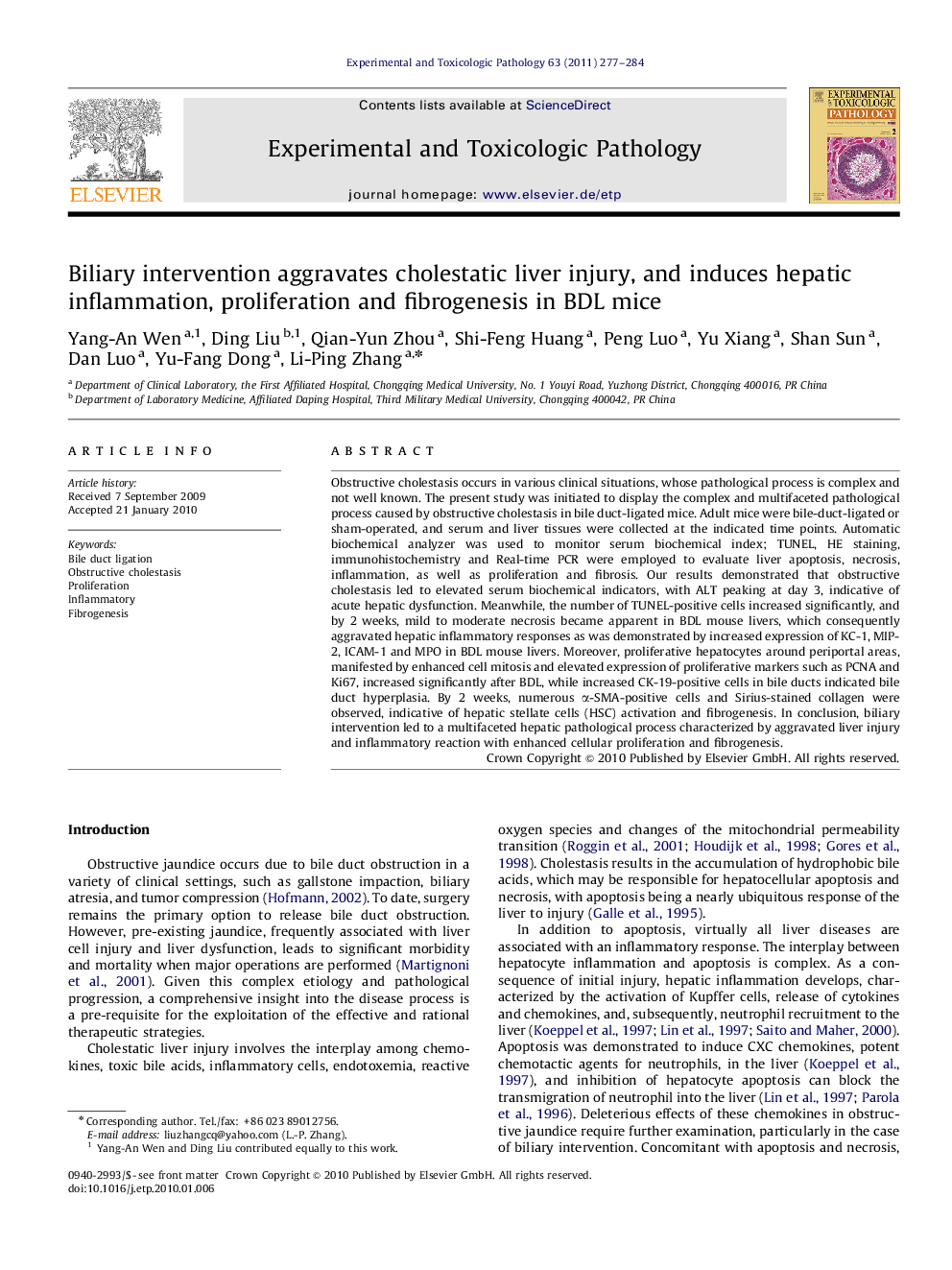| Article ID | Journal | Published Year | Pages | File Type |
|---|---|---|---|---|
| 2499530 | Experimental and Toxicologic Pathology | 2011 | 8 Pages |
Obstructive cholestasis occurs in various clinical situations, whose pathological process is complex and not well known. The present study was initiated to display the complex and multifaceted pathological process caused by obstructive cholestasis in bile duct-ligated mice. Adult mice were bile-duct-ligated or sham-operated, and serum and liver tissues were collected at the indicated time points. Automatic biochemical analyzer was used to monitor serum biochemical index; TUNEL, HE staining, immunohistochemistry and Real-time PCR were employed to evaluate liver apoptosis, necrosis, inflammation, as well as proliferation and fibrosis. Our results demonstrated that obstructive cholestasis led to elevated serum biochemical indicators, with ALT peaking at day 3, indicative of acute hepatic dysfunction. Meanwhile, the number of TUNEL-positive cells increased significantly, and by 2 weeks, mild to moderate necrosis became apparent in BDL mouse livers, which consequently aggravated hepatic inflammatory responses as was demonstrated by increased expression of KC-1, MIP-2, ICAM-1 and MPO in BDL mouse livers. Moreover, proliferative hepatocytes around periportal areas, manifested by enhanced cell mitosis and elevated expression of proliferative markers such as PCNA and Ki67, increased significantly after BDL, while increased CK-19-positive cells in bile ducts indicated bile duct hyperplasia. By 2 weeks, numerous α-SMA-positive cells and Sirius-stained collagen were observed, indicative of hepatic stellate cells (HSC) activation and fibrogenesis. In conclusion, biliary intervention led to a multifaceted hepatic pathological process characterized by aggravated liver injury and inflammatory reaction with enhanced cellular proliferation and fibrogenesis.
